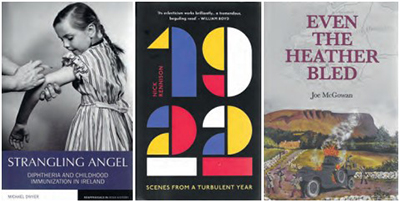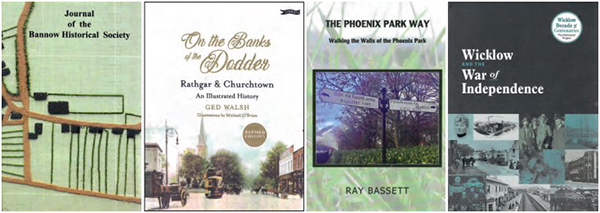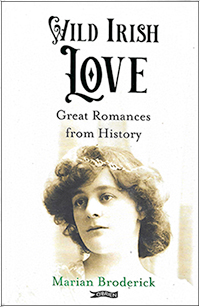BOOKWORM
Published in Book Reviews, Book Reviews, Issue 1 (January/February 2022), Reviews, Volume 30By Joe Culley
@TheRealCulls
In the cover story of our previous edition, Laurence Geary explained that vaccination in Ireland is often said to have begun in Cork in 1800 when a local physician treated 300 children against smallpox. How appropriate, then, that Cork again features as ground zero in Strangling angel: diphtheria and childhood immunization in Ireland by UCC lecturer Michael Dwyer. Fortunately, today most of us have little understanding of diphtheria, the ‘strangling angel’ which caused a leathery membrane to develop in a patient’s airways and led to slow suffocation. At the start of the twentieth century it was one of the leading causes of child mortality, particularly in Ireland.
One striking aspect of the story is how different the Irish response to the crisis was from that on the neighbouring island. Dwyer writes that, ‘in the area of health reform, [W.T.] Cosgrave’s governments were radical, progressive, and acted independently of decisions taken by their British counterparts’. In particular, we took our guidance from the US and specifically New York, where a huge vaccination programme was proving successful.
Our tale initially focuses on 1930, when Cork city medical officer Jack Saunders took the initiative to begin a diphtheria vaccination programme using a new serum from British company Burroughs Wellcome. It was, however, ‘a somewhat dubious association’ with Wellcome. This serum was as yet untried, so Saunders and the company in effect conducted experimental vaccine trials on children in two Cork orphanages and on some children brought to public health clinics by their parents, who had not given their consent to such experimental treatment. Less than ethical, at least to our minds now.
Dwyer then breaks new ground in his investigation into the extraordinary Ring scandal of 1936–7. In November 1936, Dr Daniel McCarthy of Dungarvan attended Ring College to begin a series of injections on pupils, including two of his sons. Some weeks later, several pupils developed sores in the arm and eventually, the following April, one young Cork girl, Siobhán Ó Cionnfaola, died. Dwyer writes that Dr McCarthy, incredibly, had not sterilised the syringe after each injection, and that he had inadvertently then been injecting a strain of tuberculosis into each child’s arm. Some twenty children developed tuberculosis. In the ensuing inquiry, McCarthy and the school tried to blame the tragedy on a bad batch of serum from Wellcome. The foreman of the inquest jury was the brother-in-law of the principal of Ring College, Séamus Ó hEocha. As the locals circled the wagons, the jury found that the blame lay with Wellcome. In reality, however, even the parents of the Ring students recognised a ‘concocted verdict’.
First published in 2018, Strangling angel won the NUI prize in history, and Liverpool University Press has seen fit to reissue it as a (much more affordable) paperback. Although it is formally an academic work, Dwyer writes in a clear prose, so a casual reader who is willing to put in the effort will be rewarded.
 It will, of course, be another busy year on the commemoration front. Most of it, sadly, will be centred on the tragedies of the Civil War—the shelling of the Four Courts and the deaths of Griffith, Collins, Brugha and Childers. All these stories find their place in Nick Rennison’s entertaining 1922: scenes from a turbulent year, the most recent addition to the growing genre of ‘biography of year’. Other Irish entries in 1922 include the death of Ernest Shackleton and the publication of Ulysses, while from beyond our parochial vision we also read of the trials of Fatty Arbuckle, the emergence of Mussolini, and the sacking and destruction of the ancient city of Smyrna (present-day Izmir). That’s a tale about which I’m ashamed to say I knew little. A great book to dip into.
It will, of course, be another busy year on the commemoration front. Most of it, sadly, will be centred on the tragedies of the Civil War—the shelling of the Four Courts and the deaths of Griffith, Collins, Brugha and Childers. All these stories find their place in Nick Rennison’s entertaining 1922: scenes from a turbulent year, the most recent addition to the growing genre of ‘biography of year’. Other Irish entries in 1922 include the death of Ernest Shackleton and the publication of Ulysses, while from beyond our parochial vision we also read of the trials of Fatty Arbuckle, the emergence of Mussolini, and the sacking and destruction of the ancient city of Smyrna (present-day Izmir). That’s a tale about which I’m ashamed to say I knew little. A great book to dip into.
In Even the heather bled, prolific Sligo historian Joe McGowan tries to get at the truth behind one of the more controversial events of the Civil War, the death of six Irregulars atop Benbulben. Among the dead was Brian MacNeill, son of Eoin, who was minister for education in the provisional government at the time, and Seamus Devins TD.
In mid-September 1922, Free State forces made a concerted push against a large force of Irregulars around Sligo. As the Irregulars were driven back and surrounded, they broke up and began to scatter. On the morning of the 20th, ‘Sligo’s noble six’, as they are known in legend, were surprised by National Army troops as they tried to escape across the cloud-shrouded mountain. What happened next is the question.
It’s a handsome hardback production that should appeal in particular to locals. Mind you, there’s a slow build-up—the story begins with the arrival of Strongbow.
Speaking of whom, the fourth edition of the Journal of the Bannow Historical Society includes a speculative but quite interesting computer reconstruction by Ian Magahy of the borough’s Norman townland, and Greg Walsh takes a close look at the family trees to see just exactly who those first Normans were. The society also boasts an impressive website.

Ged Walsh’s fine On the banks of the Dodder: Rathgar and Churchtown, an illustrated history was first published in 2019 but recent developments, including the potential threat to the area’s built heritage raised by the proposed bus corridor, and the longueur of the first Covid lockdown encouraged local man and publisher Michael O’Brien to have a fresh go at it. This revised edition is lavishly illustrated with new maps and images—including over 60 pen-and-ink drawings by Michael O’Brien himself.
Former senior Irish diplomat Ray Bassett has put together a most useful little guide in The Phoenix Park Way: walking the walls of the Phoenix Park. Bassett, who was reared just over the walls in Castleknock, says that it would take about three hours to stroll the 11km internal circumference of the park, but he breaks the journey into nine bits, representing the various stretches from gate to gate. There are also brief excursions just outside the walls, such as a visit to the military cemetery in Grangegorman. And you are never too far from a fine hostelry.
 Among the essays in the comprehensive, government-sponsored Wicklow and the War of Independence is Chris Lawlor’s story about one William Mitchell, the only Black and Tan to be hanged for murder. It seems that Mitchell, who was a war veteran and possibly Irish, went on a bender during which he and a colleague decided to raid the Dunlavin home of a wealthy Protestant landlord and justice of the peace, Robert Dixon. It didn’t end well.
Among the essays in the comprehensive, government-sponsored Wicklow and the War of Independence is Chris Lawlor’s story about one William Mitchell, the only Black and Tan to be hanged for murder. It seems that Mitchell, who was a war veteran and possibly Irish, went on a bender during which he and a colleague decided to raid the Dunlavin home of a wealthy Protestant landlord and justice of the peace, Robert Dixon. It didn’t end well.
As it happens, only a few weeks ago we held two Hedge Schools on the events in the county (north and south), which are available wherever you get your podcasts or at https://www.historyireland.com/hedge-schools/.
Marian Broderick’s Wild Irish love: great romances from history is one of those popular miscellanies from O’Brien Press. As the blurb has it, ‘With chapters on Inspirations, Love & War, Love Across the Divide, Secrets & Scandals and When Love Goes Wrong … [it] tells of the men and women whose passions drove them to be together: often in the face of society, family, and even their own safety’. And it’s nice to see that in ‘Love Out Loud’ Micheál and Hilton get a mention.
Michael Dwyer, Strangling angel: diphtheria and childhood immunization in Ireland (Liverpool University Press, £24.95 pb, 180pp, ISBN 9781800856585).
Nick Rennison, 1922: scenes from a turbulent year (Oldcastle Books, £12.99 hb, 250pp, ISBN 9780857304674).
Joe McGowan, Even the heather bled (Aeolus Publications, €19.99 hb, 280pp, ISBN 9780952133483).
Greg Walsh (ed.), Journal of the Bannow Historical Society, no. 4 (Bannow History, available from website, 210pp, ISSN 2009101X).
Ged Walsh, On the banks of the Dodder: Rathgar and Churchtown, an illustrated history (O’Brien Press, €29.99 hb, 208pp, ISBN 9781788492706).
Ray Bassett, The Phoenix Park Way: walking the walls of the Phoenix Park (YPS Publishing, €15 pb, 100pp, ISBN 9781838039714).
Ciarán Deane (ed.), Wicklow and the War of Independence (Wicklow County Council, n/a pb, 245pp, ISBN 9780953390496; also available as an e-book).
Marian Broderick, Wild Irish love: great romances from history (O’Brien Press, €19.99 hb, 288pp, ISBN 9781788491822).
















